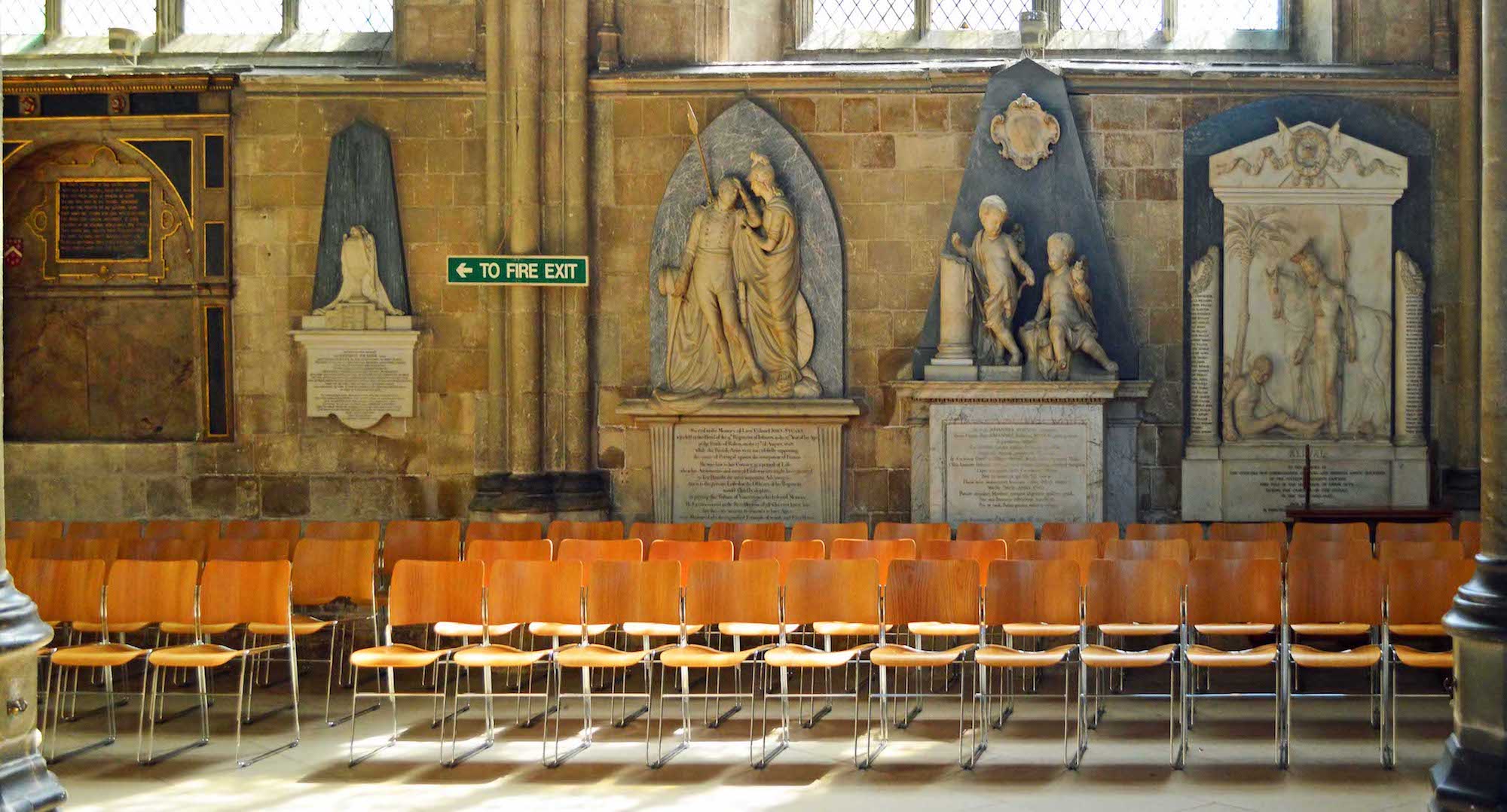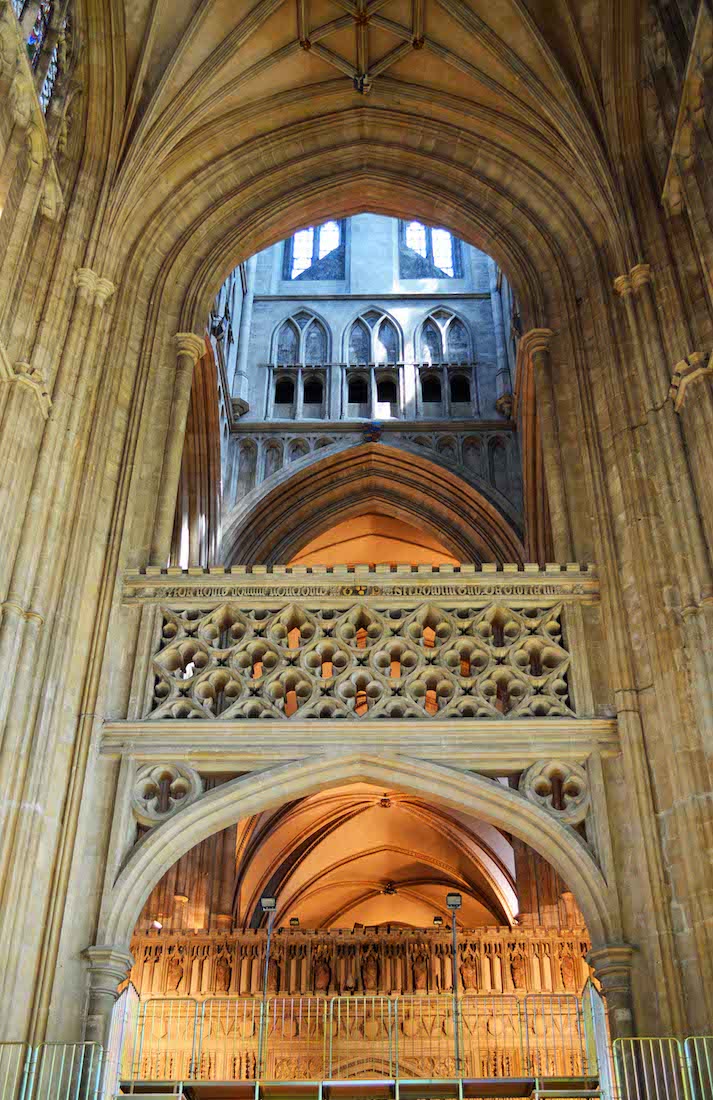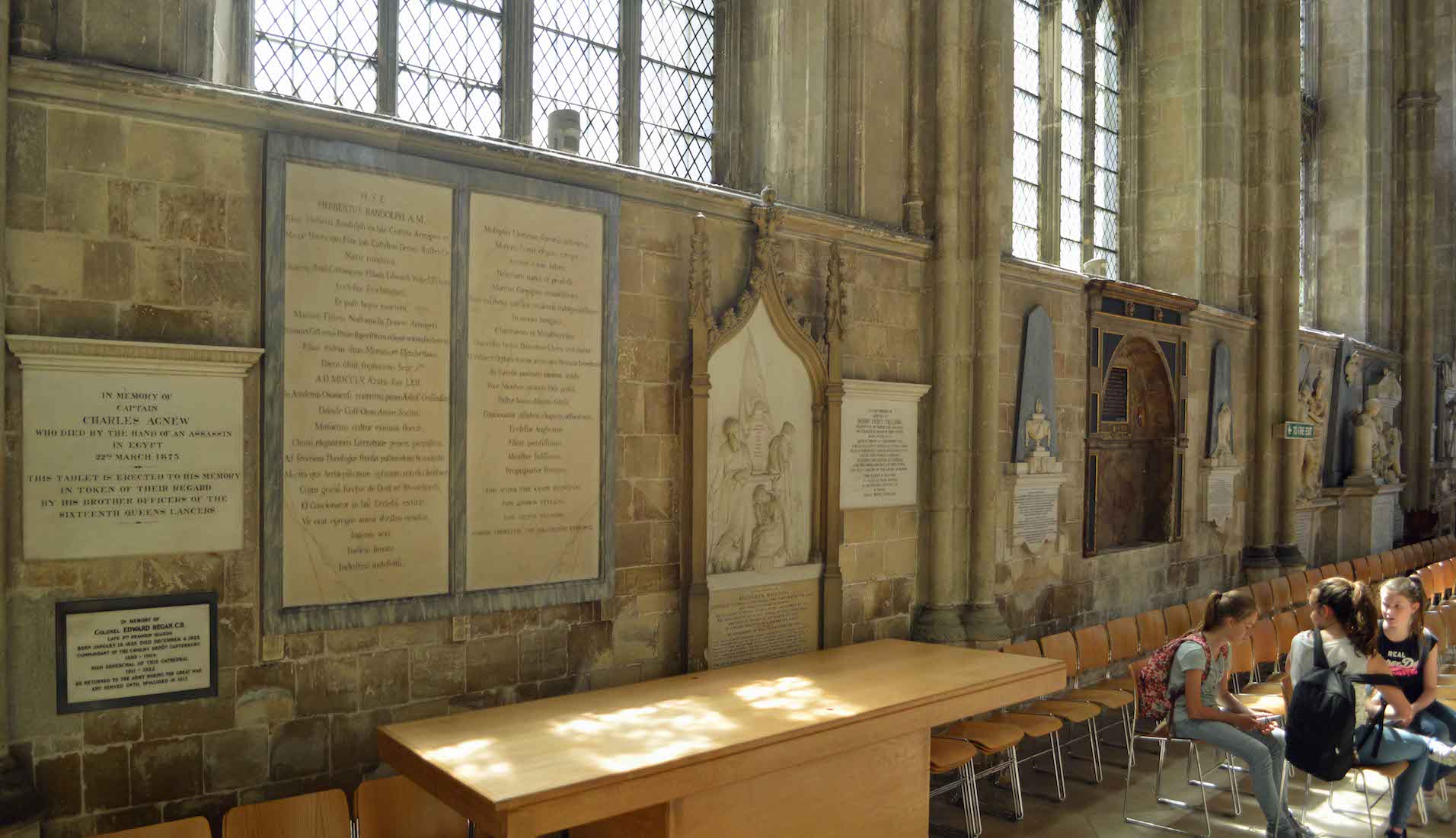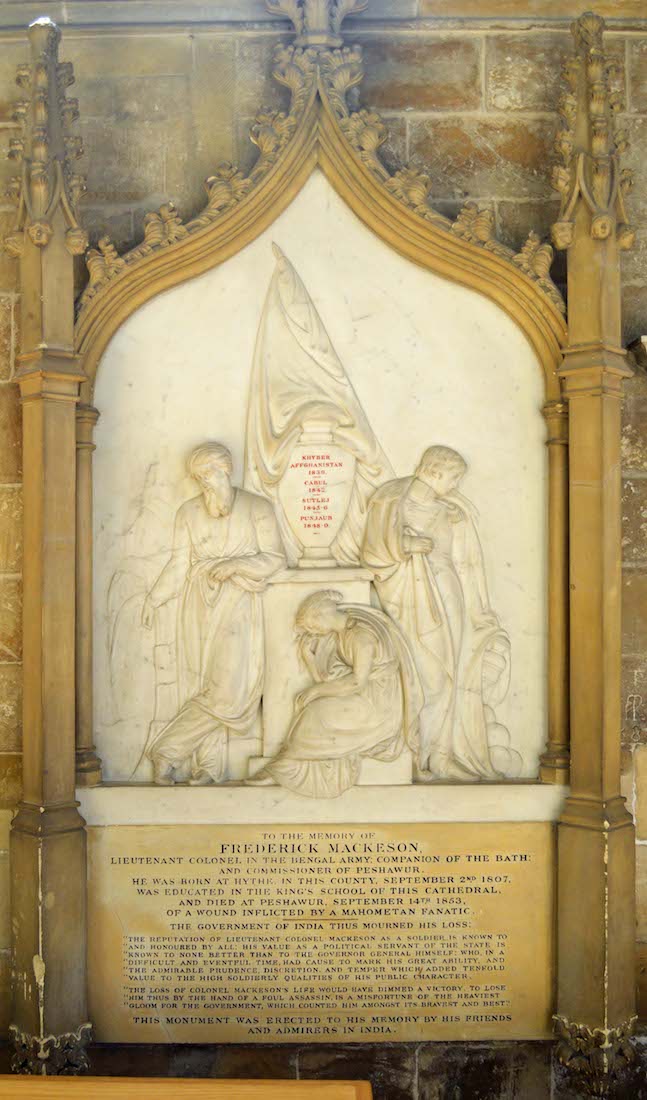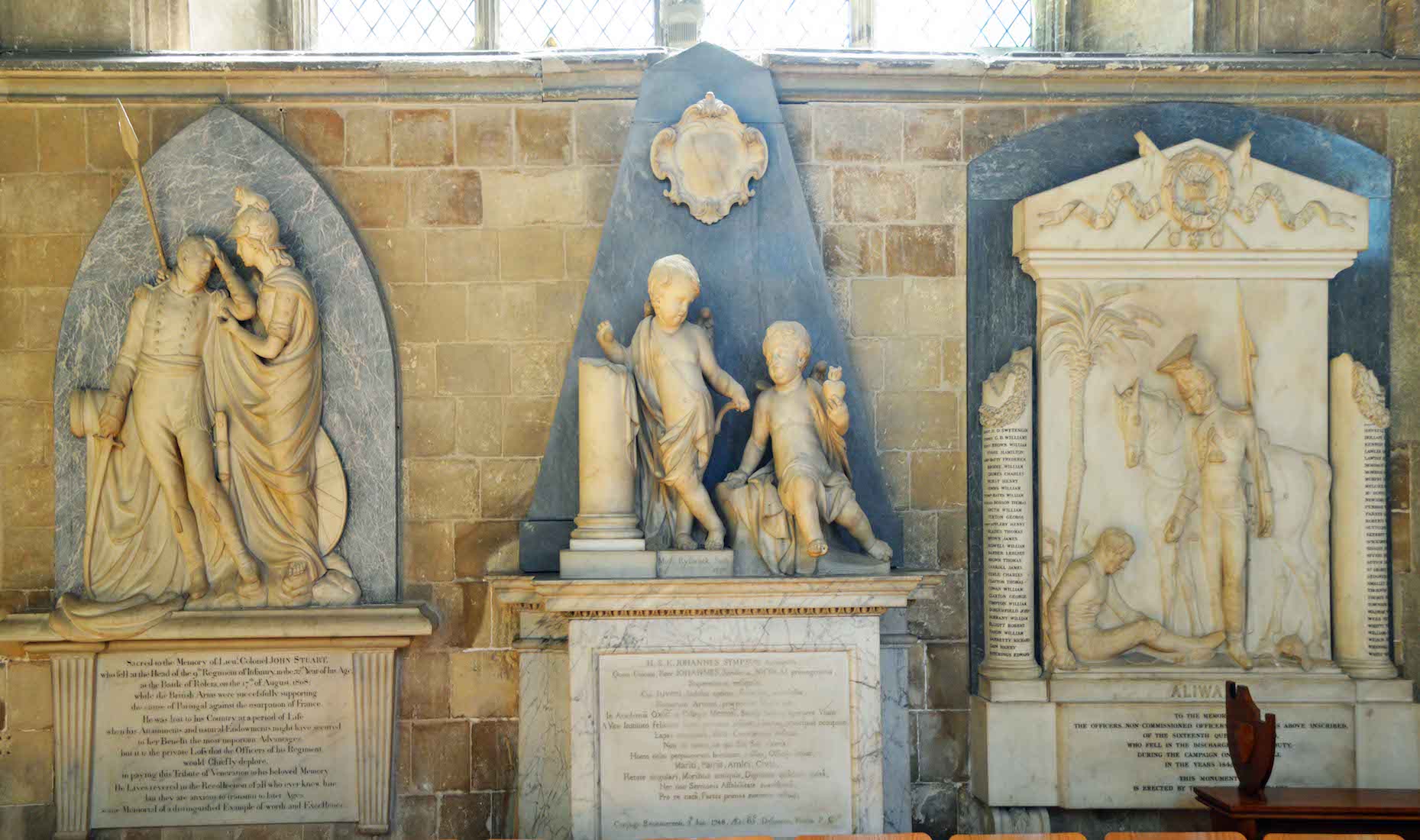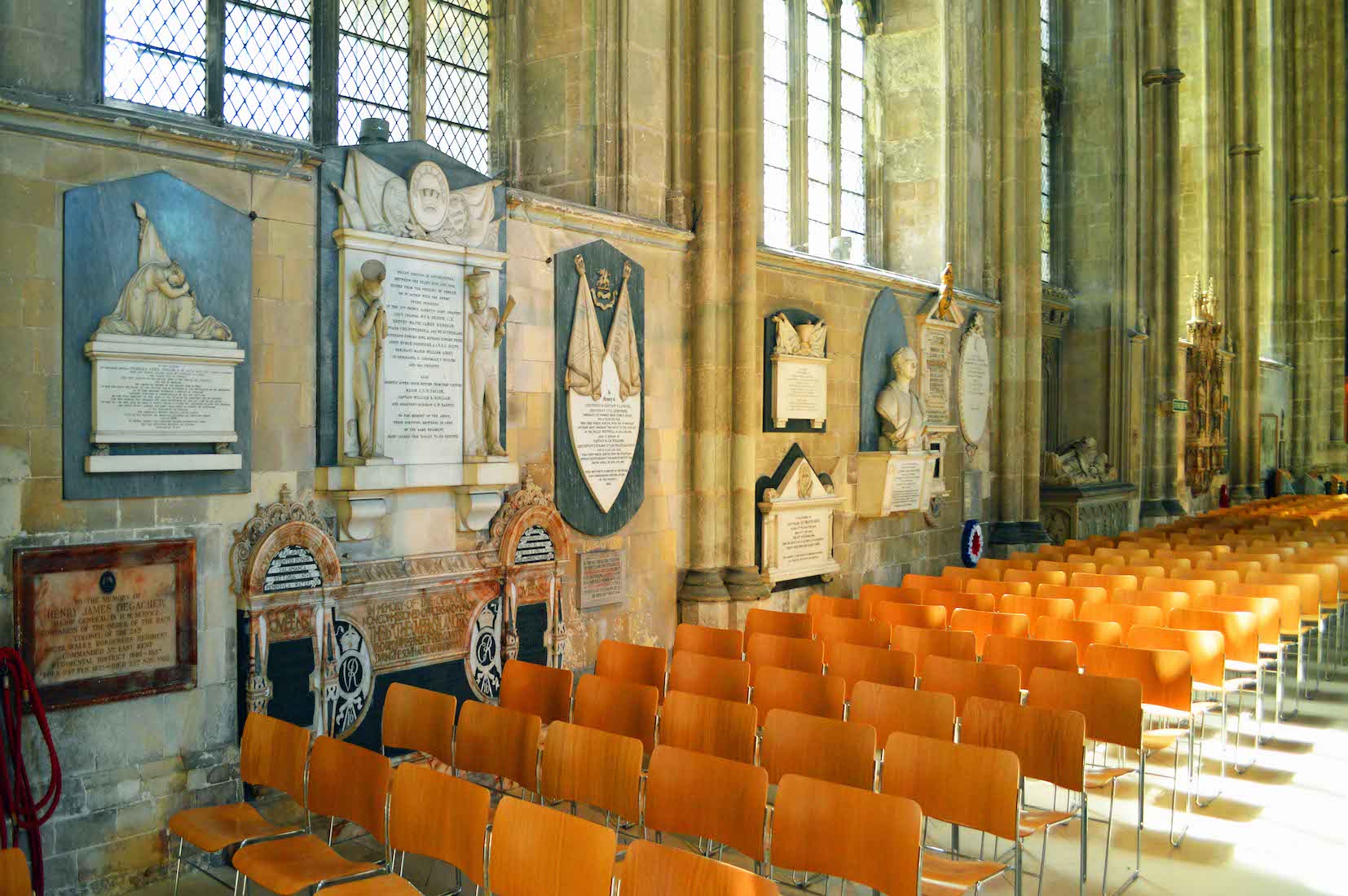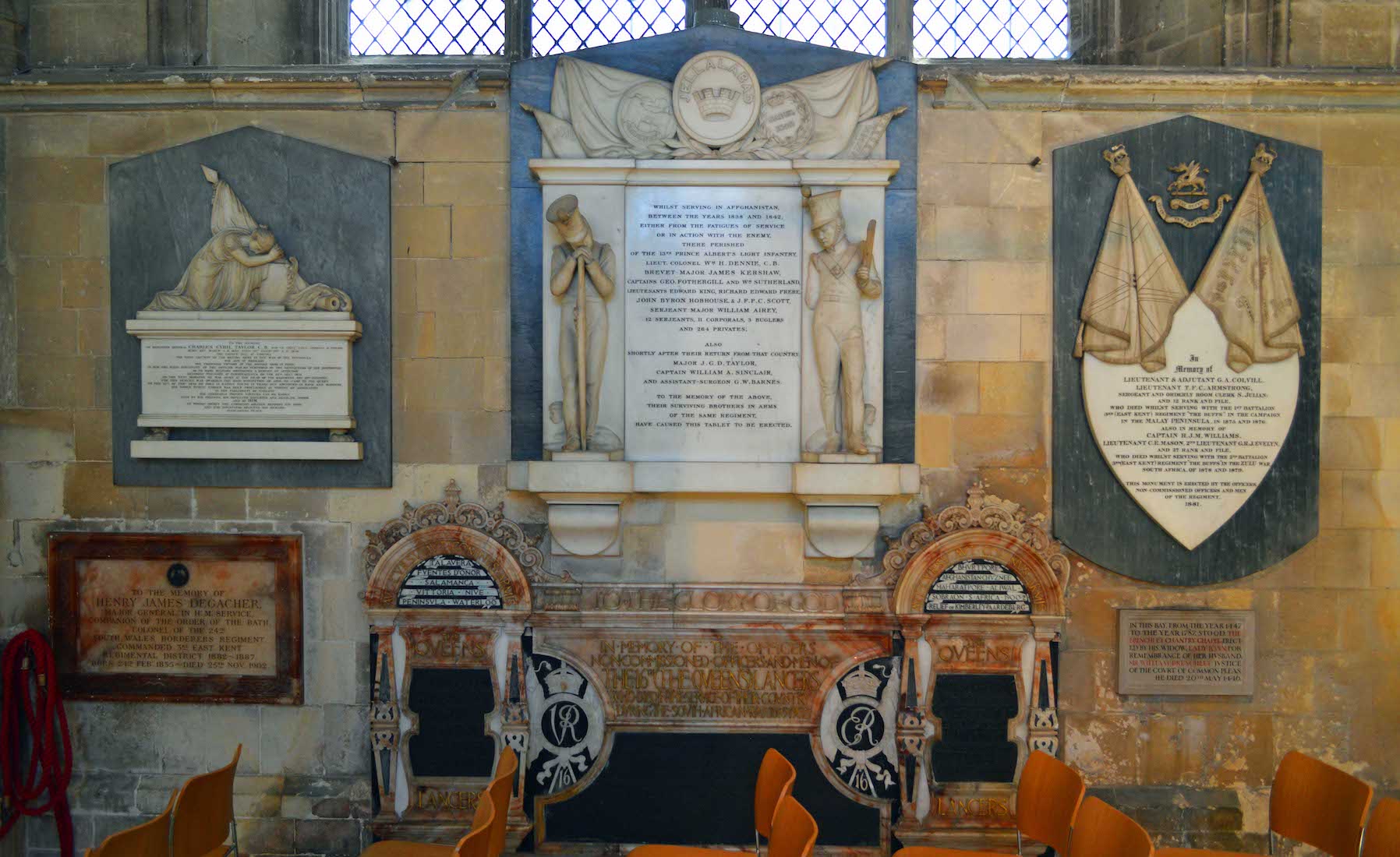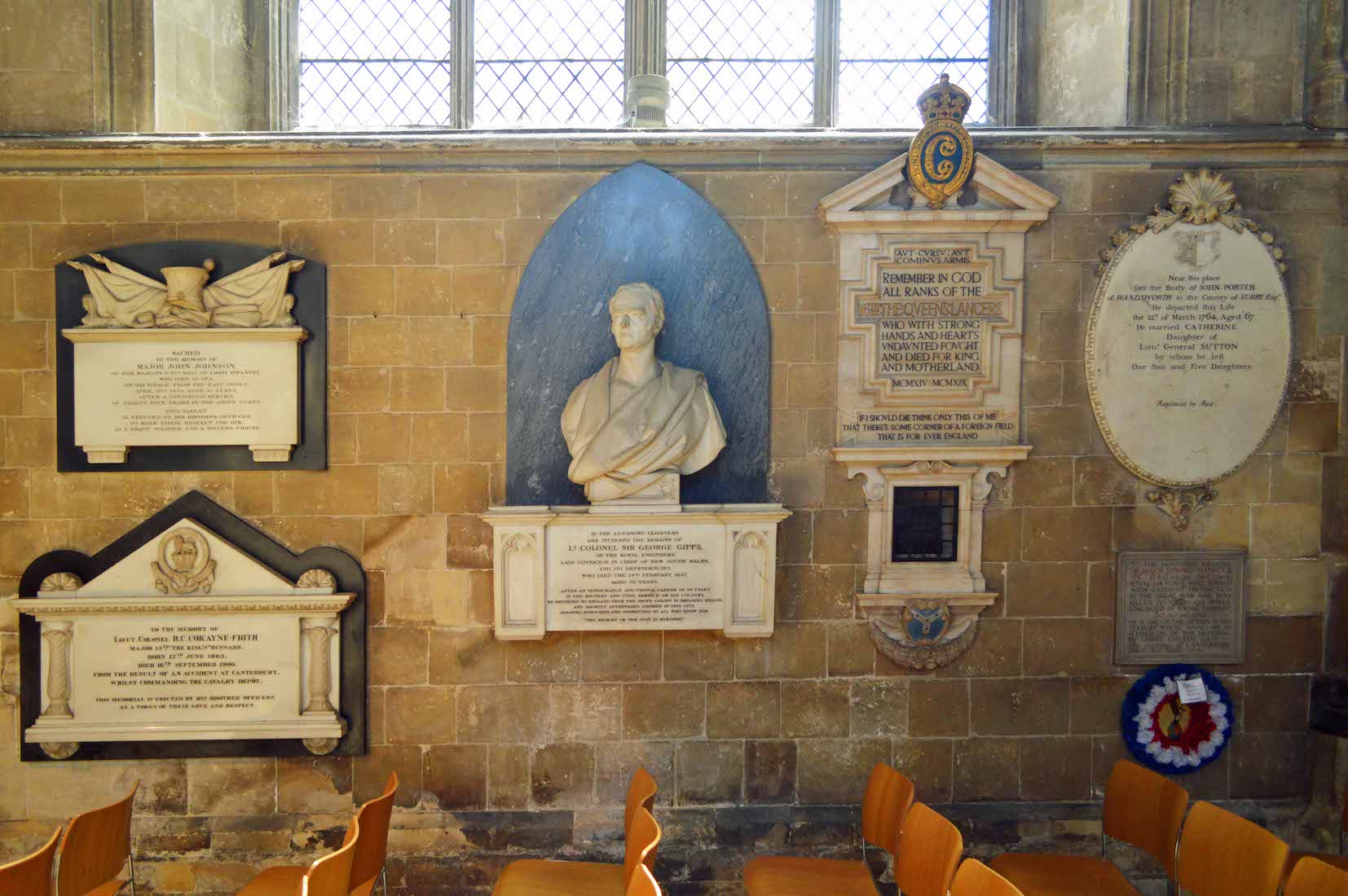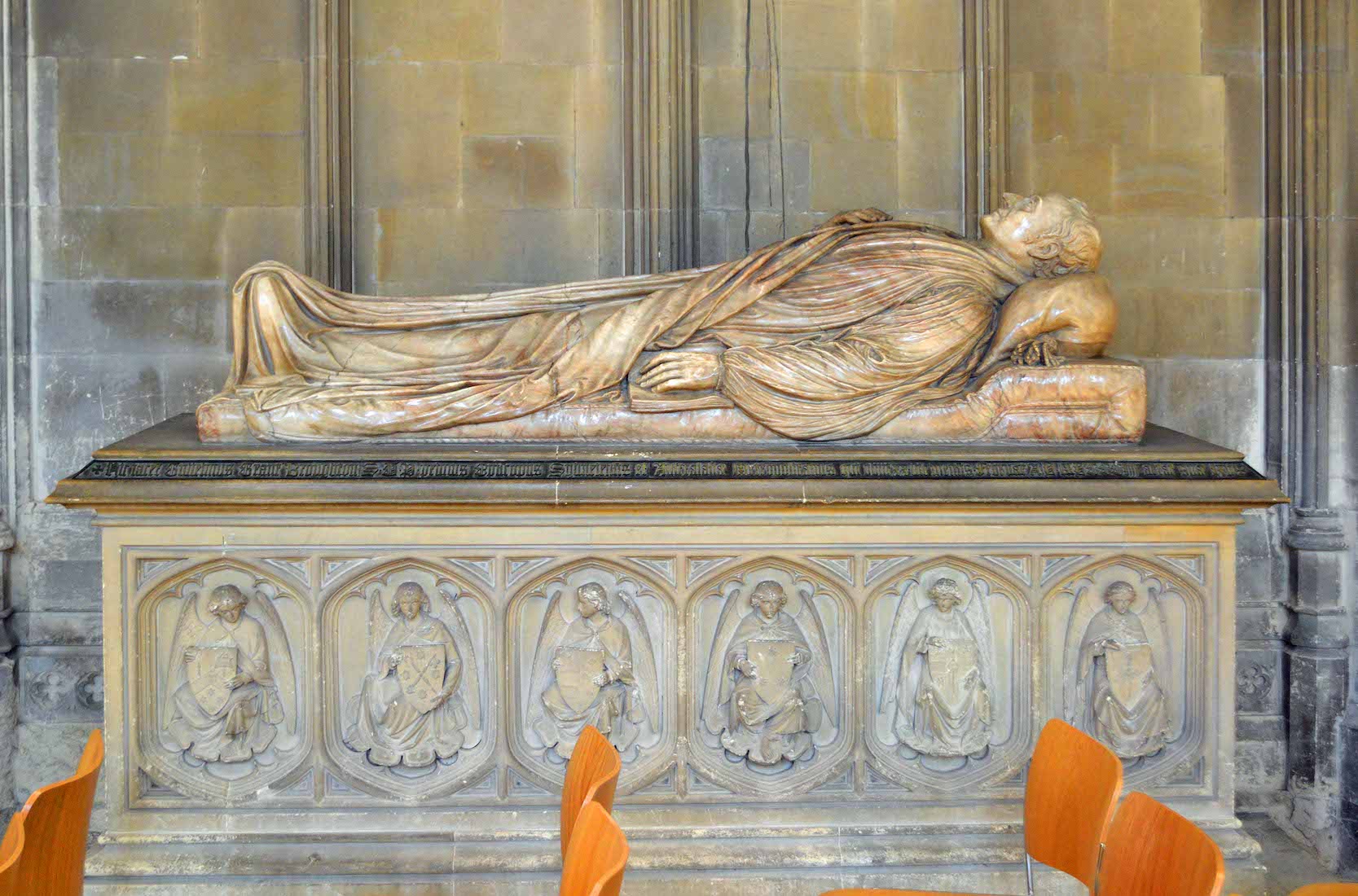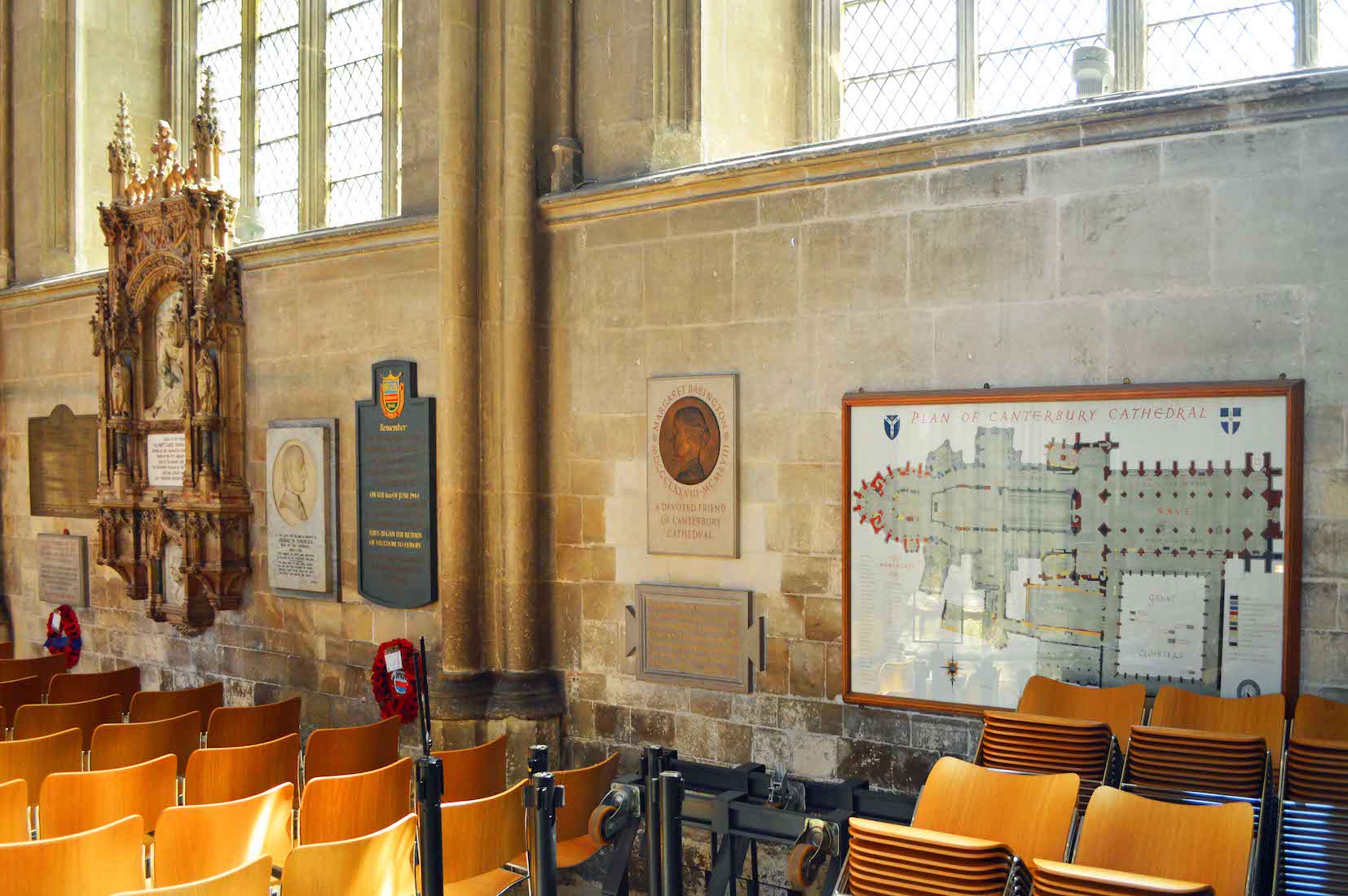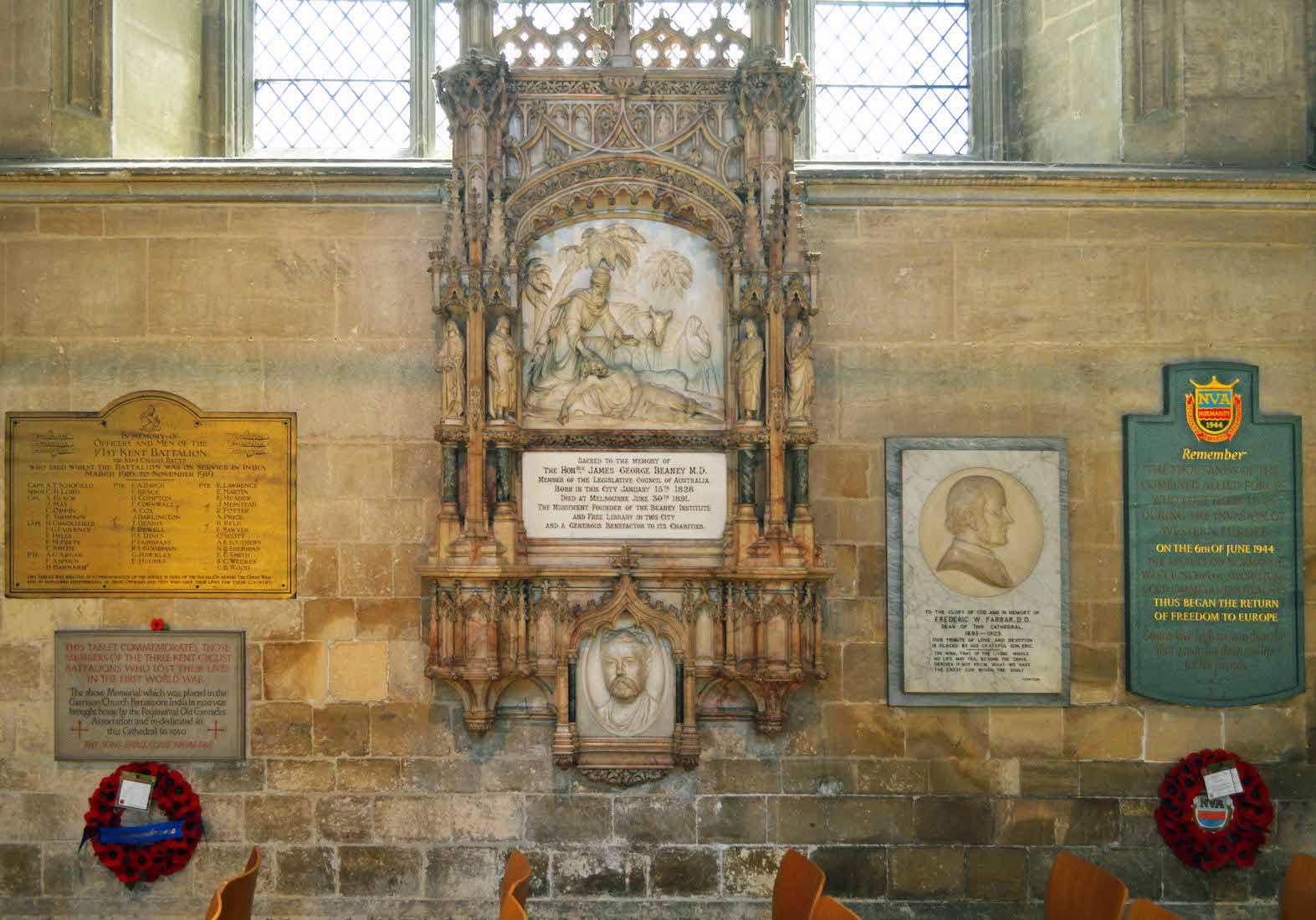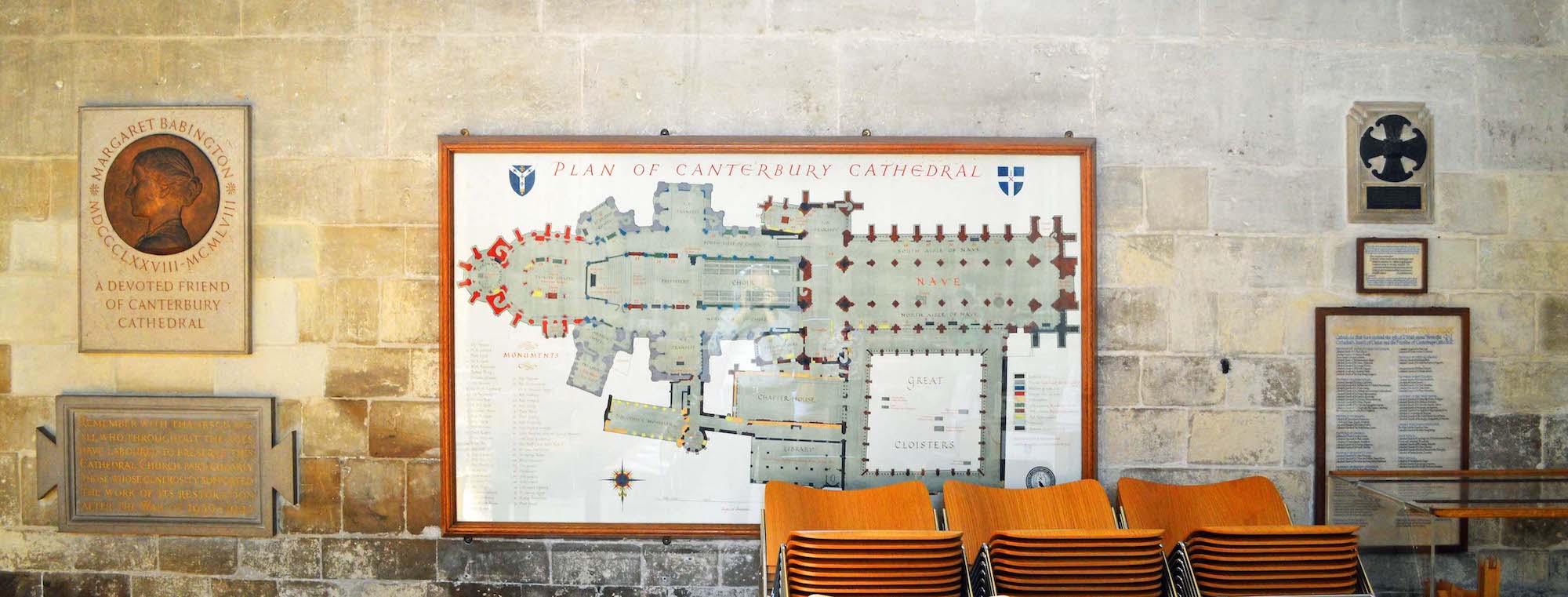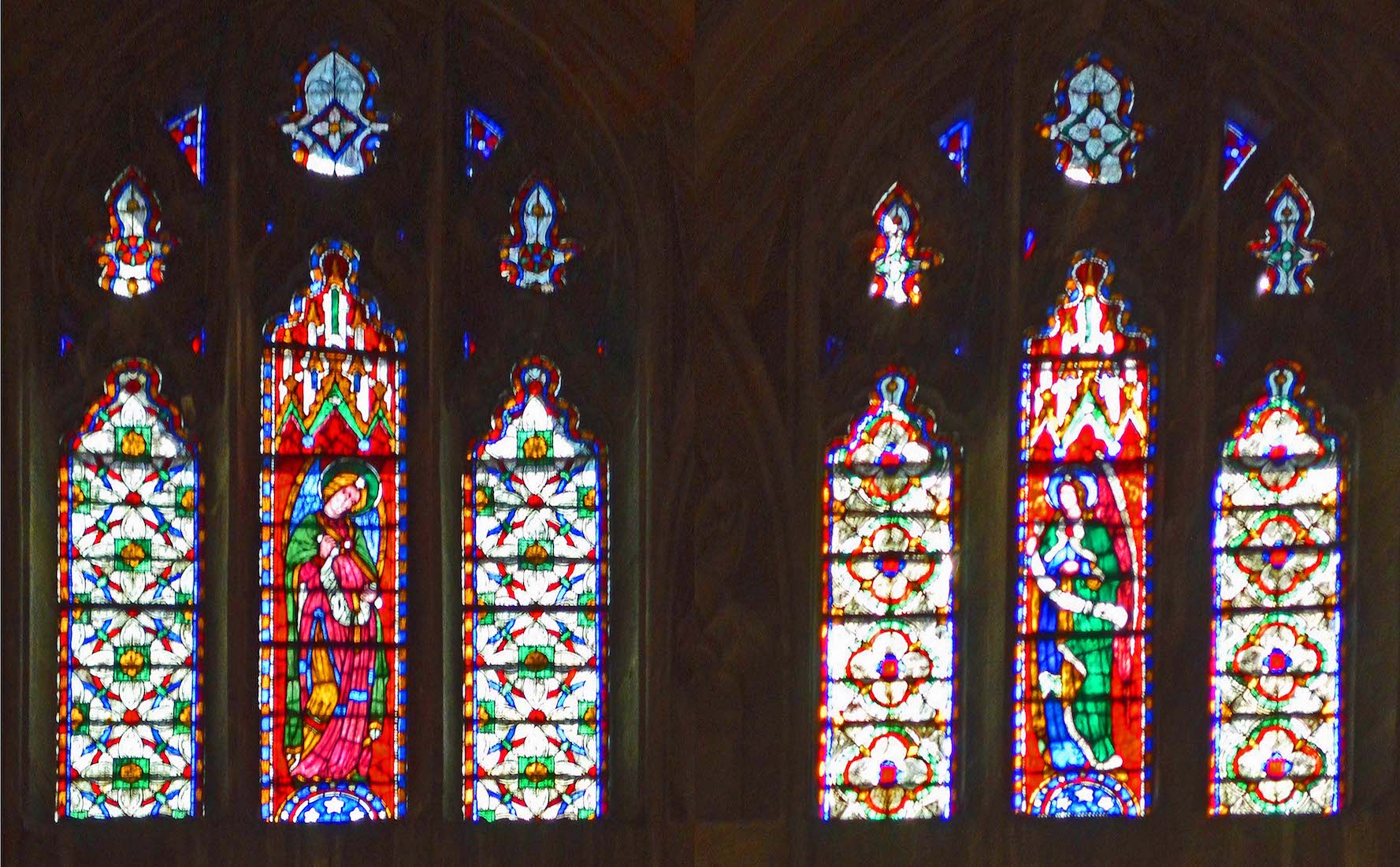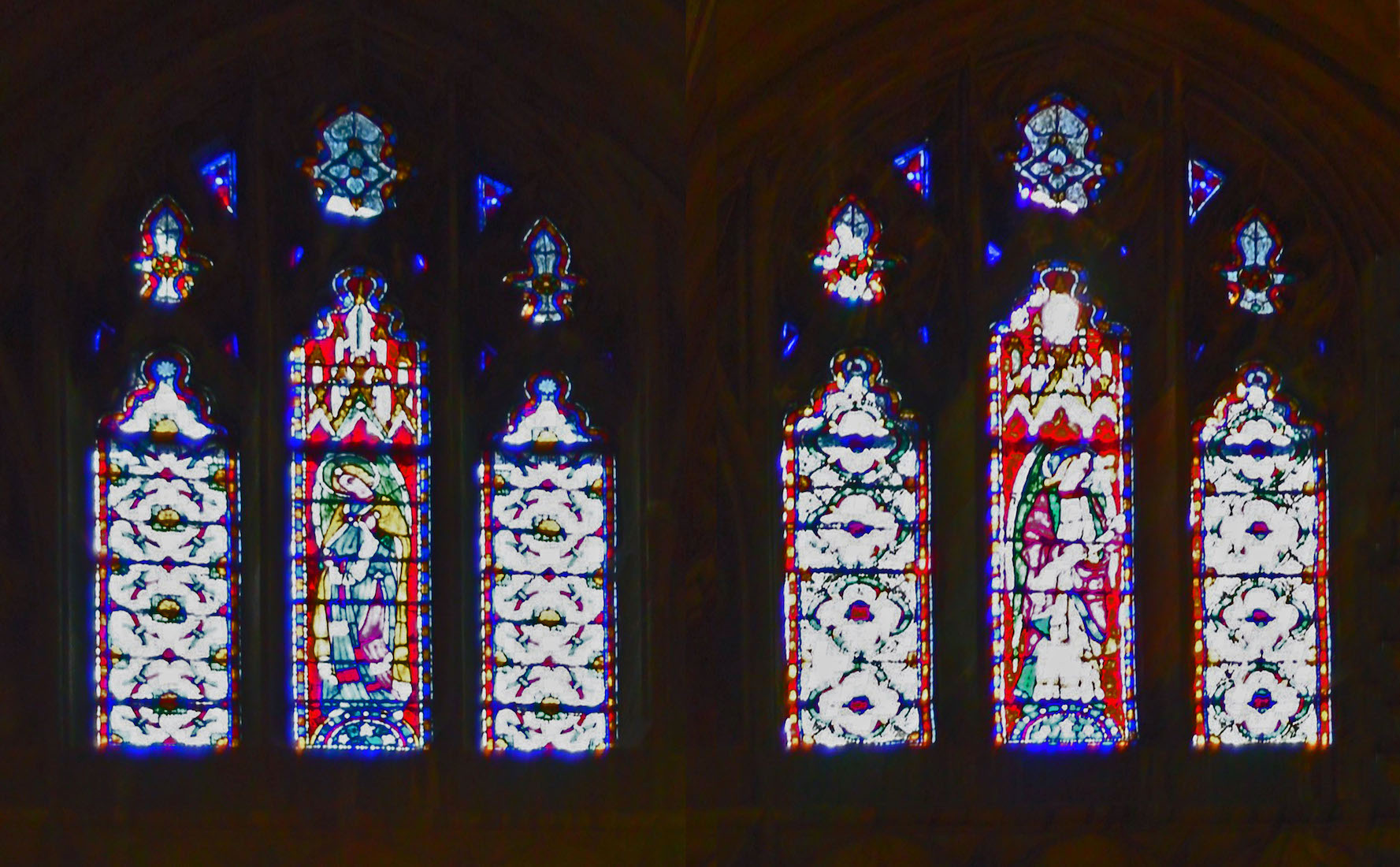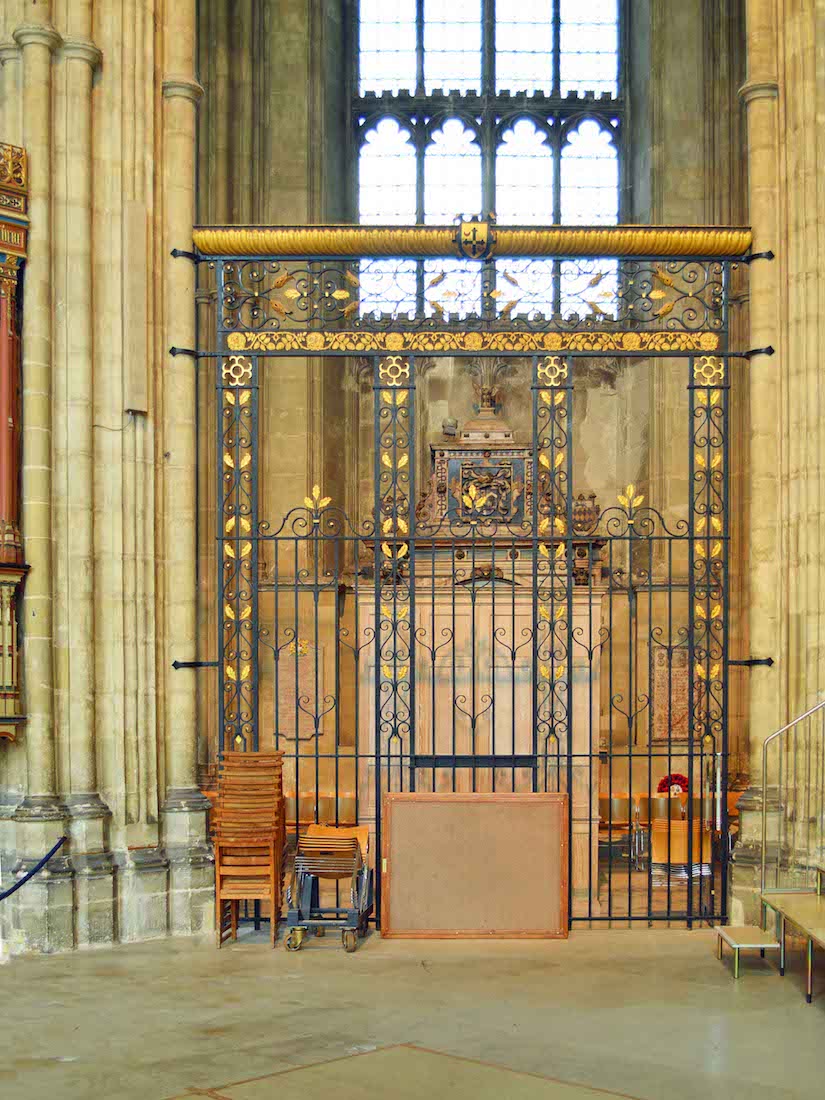
An attractive wrought iron screen with gold decoration stands just West of the pulpit.. PLAN
62. NAVE ALTAR AREA
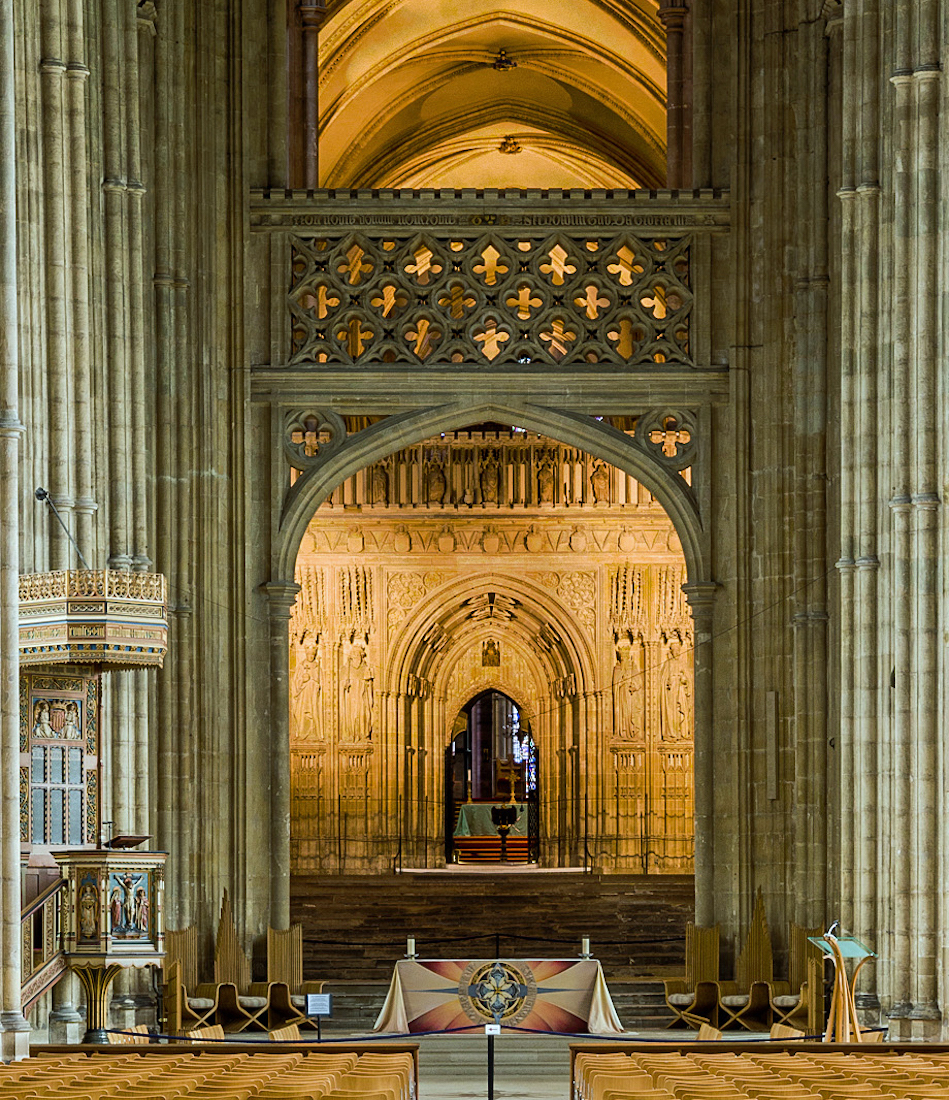
The nave altar stands close by the pulpit. It is from here that the Eucharist is served each week. Above the altar is another of the decorated strainer panels that help hold the giant columns in place. Notice the steps which rise up behind to the Crossing.
63. ALTAR AND COMPASS ROSE
On the floor in front of the nave altar is a design known as the compass rose. It is a worldwide symbol of Anglicanism with a mitre at top, a St George cross at centre, a compass pointing to all corners of the earth, and a Greek inscription: The Truth shall set you free. [Cathedral photo]
64. ACROSS TO THE SOUTH AISLE
From the compass rose we look across to the South Aisle. We shall explore this aisle from the Western end (to our left) from where it passes under another bracing strainer arch.
65. A BRACING ARCH
Those who designed and built these old cathedrals accomplished great feats of engineering, but they didn’t always get it right. This attractive strainer arch was a later addition, added in 1495, helping to hold fast the column supporting the central Bell Harry Tower.
66. SOUTH AISLE MEMORIALS
Like the North aisle, the South aisle has windows of clear glass, and many memorials along the lower wall.
67. MACKESON MEMORIAL
Frederick Mackeson was Lt Colonel in the Bengal Army, fighting in Khyber, Afghanistan 1839, Cabul 1842, Sutlej 1845–6, and the Punjab in 1848–9.
68. MEMORIALS
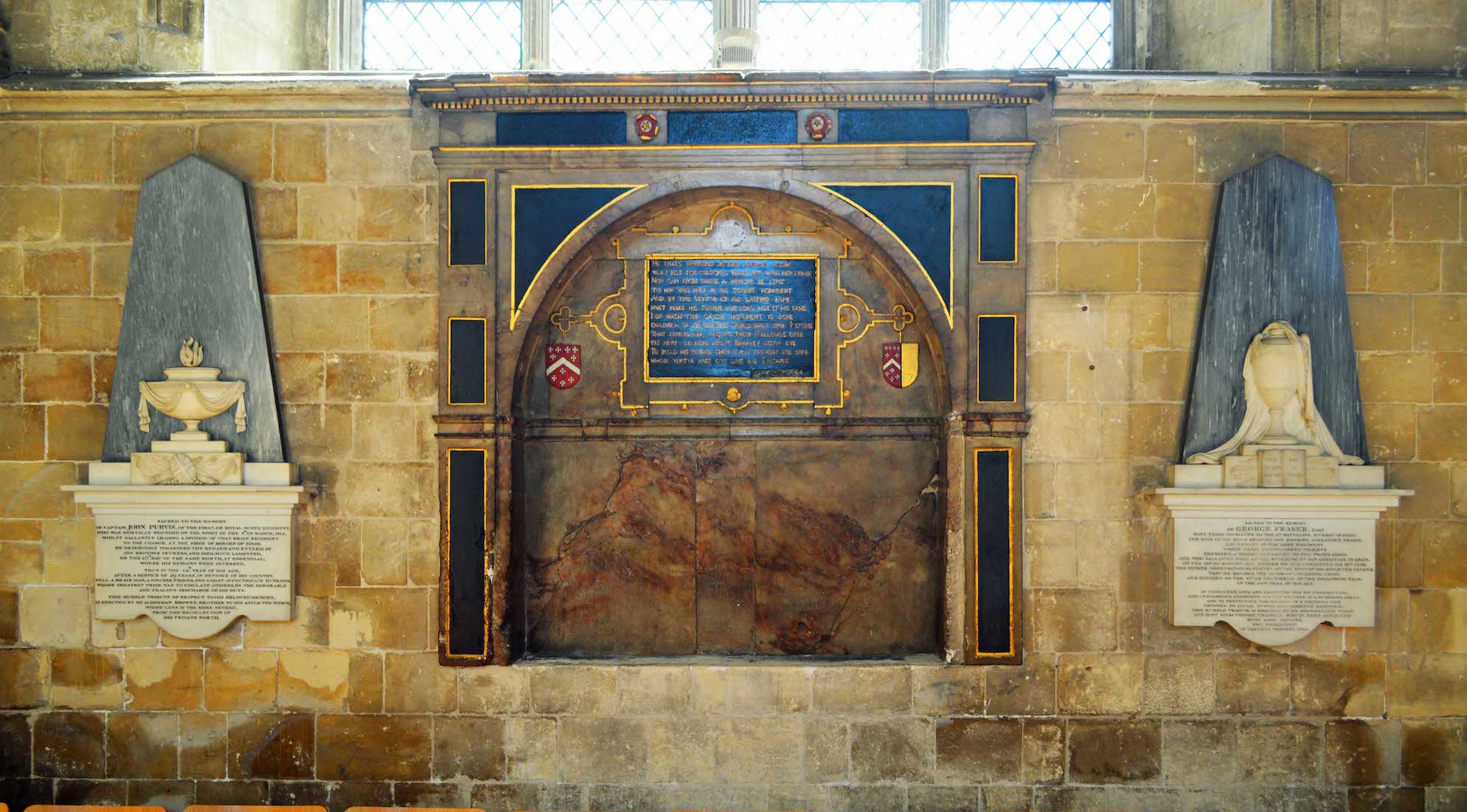
The two outer memorials celebrate the lives of Captain John Purvis, and Paymaster George Fraser. The central panel carries a verse in Old English: ‘He that’s imprison’d in this narrow roome, Wer’t not for custom, needs nor verse nor tomb; ... To build his tomb, then, is not thought so safe, Where virtue must outlive his epitaph.’
69. SOUTH NAVE MONUMENTS
These three memorials are sacred to the memory of Lt Colonel John Stuart, Major John Simpson (1748 – 1825), and the men of the Sixteenth Queen’s Lancers who fell at the battle of Aliwa. We are now back level with the compass rose.
70. NAVE SOUTH WALL
This is a view of the South wall towards the West.
71. THE FOLLY OF WAR I
Wars seem to be a necessary evil, but what a lot of pain and suffering they cause! Remembered here: Brigadier General Charles Cyril Taylor, Major General Henry James Degacher, members of The 16th Queen’s Lancers, members of the 15th Prince Albert’s Light Infantry, members of ‘The Buffs’. There is also a reminder that the Brenchley Chantry Chapel stood here from 1447 – 1787.
72. THE FOLLY OF WAR II
Remembered here: Major John Johnson, Lt Colonel R. C. Cokayne-Frith, Lt Colonel Sir George Gipps, members of the 16th Queen’s Lancers, John Porter, Major Edward Mannock.
73. BROUGHTON TOMB
This is the tomb of William Grant Broughton (1788 – 1853). Broughton was the first (and only) Bishop of Australia of the Church of England. (The Diocese of Australia was later divided into a number of smaller dioceses.)
74. NAVE SOUTH WALL WEST
We are now reaching the end of this memorial marathon!
75. REMEMBERED
Remembered here are: members of the Kent Cyclist Battalion who died in combat, The Hon James George Beaney (thought to be a good Samaritan), Dean Frederic W. Farrar, and Allied casualties in the 1944 Normandy assault.
76. PLAN
This final section of the South wall shows a plan of the Cathedral, memorials to Margaret Babington and those who have laboured to preserve the Cathedral, a replica Canterbury Cross, and a list of all the cathedrals which have received such a cross.
77. NAVE CLERESTORY WINDOWS I
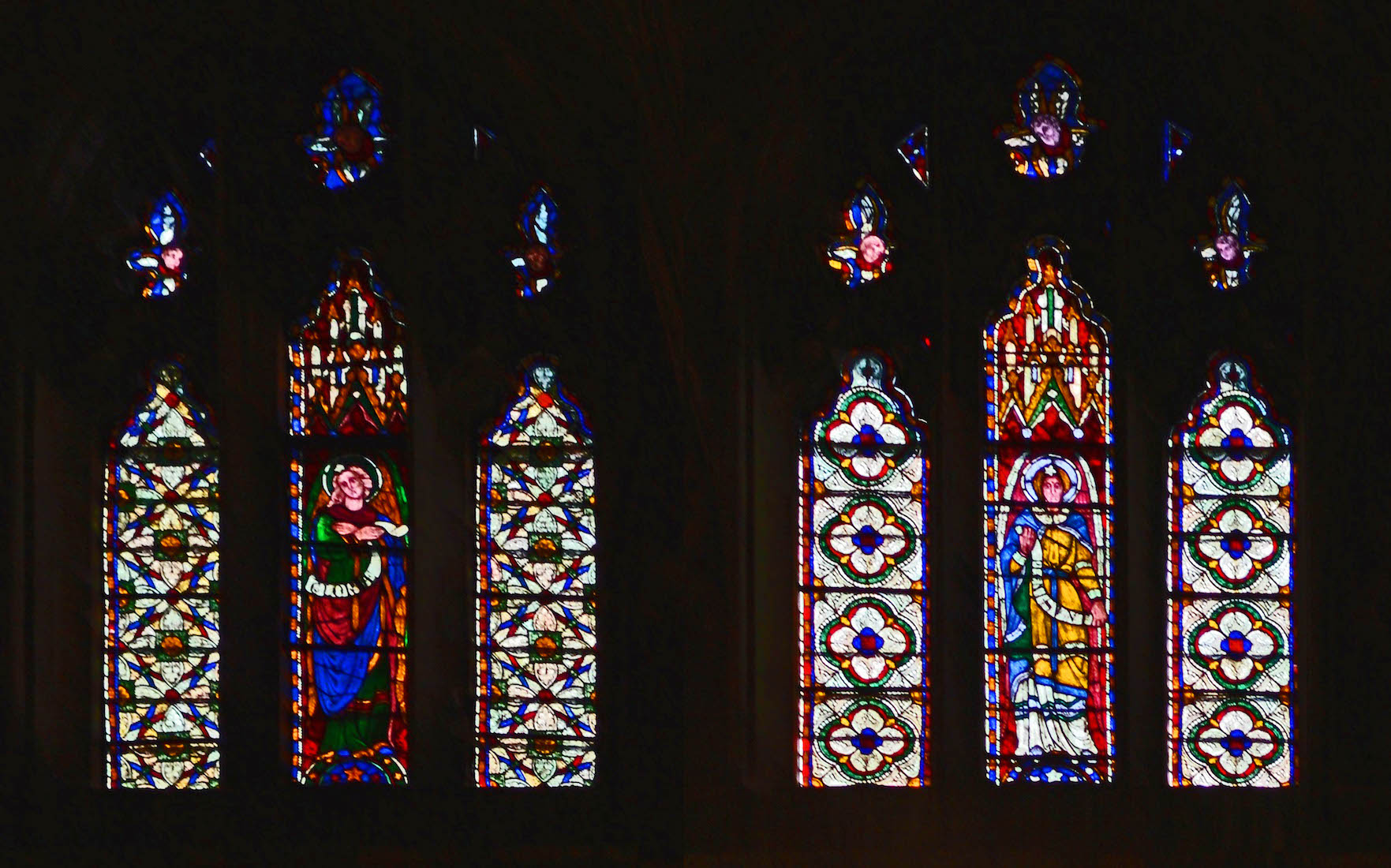
As we have observed, the Cathedral nave windows are mostly in clear glass. However, some 60 feet above us is a set of 14 triplet clerestory windows. These photos are the best quality I could manage, but in fact, any photos of these windows seem to be extremely rare.
78. CLERESTORY WINDOWS II
Each set of windows lies in an arch marked by a pair of West-East nave columns. The triplet windows have matching outer lights about a central figure. I believe these to be Northern windows.
79. CLERESTORY WINDOWS III
The outer patterned lights tend to have a floral theme. Each central figure looks to be an angel. I am interested that even with relatively poor resolution, I can still see more through the lens than I could with the naked eye.
80. CLERESTORY WINDOWS IV

On the South side, the light contrast is less, and the photographs better. The nature of the windows is different too, with three pictorial lights in each window.



